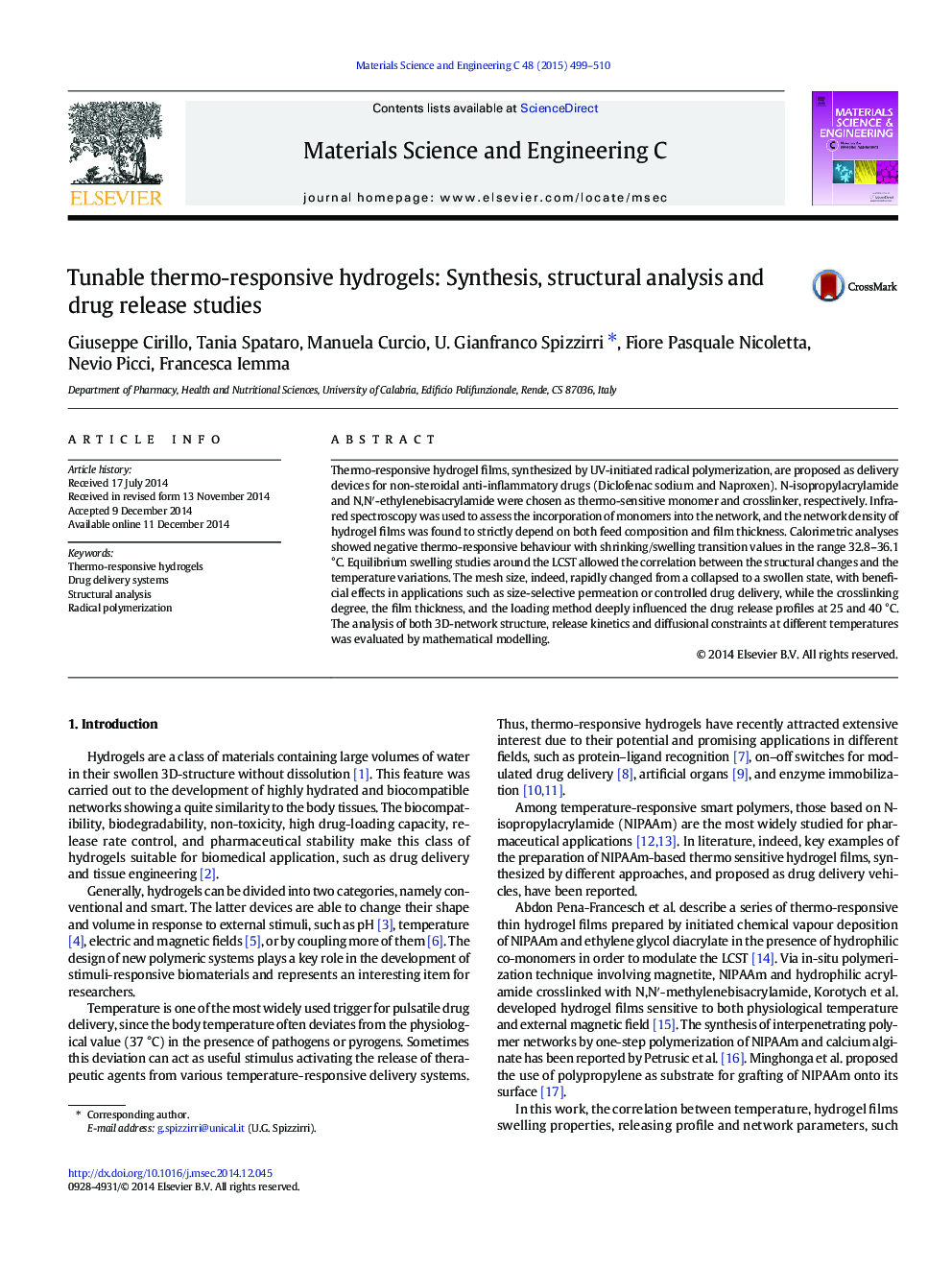| Article ID | Journal | Published Year | Pages | File Type |
|---|---|---|---|---|
| 1428482 | Materials Science and Engineering: C | 2015 | 12 Pages |
•Poly(N-isopropylacrylamide-co-N,N′-ethylenebisacrylamide) thermo-responsive hydrogels•Structural parameters as a function of the temperature by equilibrium swelling studies•Release experiments at different temperatures of non-steroidal anti-inflammatory•Diffusional constraints and their modulation as a function of the temperature medium•Quantification of the diffusional contribute to the mechanism of the drug delivery
Thermo-responsive hydrogel films, synthesized by UV-initiated radical polymerization, are proposed as delivery devices for non-steroidal anti-inflammatory drugs (Diclofenac sodium and Naproxen). N-isopropylacrylamide and N,N′-ethylenebisacrylamide were chosen as thermo-sensitive monomer and crosslinker, respectively. Infrared spectroscopy was used to assess the incorporation of monomers into the network, and the network density of hydrogel films was found to strictly depend on both feed composition and film thickness. Calorimetric analyses showed negative thermo-responsive behaviour with shrinking/swelling transition values in the range 32.8–36.1 °C. Equilibrium swelling studies around the LCST allowed the correlation between the structural changes and the temperature variations. The mesh size, indeed, rapidly changed from a collapsed to a swollen state, with beneficial effects in applications such as size-selective permeation or controlled drug delivery, while the crosslinking degree, the film thickness, and the loading method deeply influenced the drug release profiles at 25 and 40 °C. The analysis of both 3D-network structure, release kinetics and diffusional constraints at different temperatures was evaluated by mathematical modelling.
